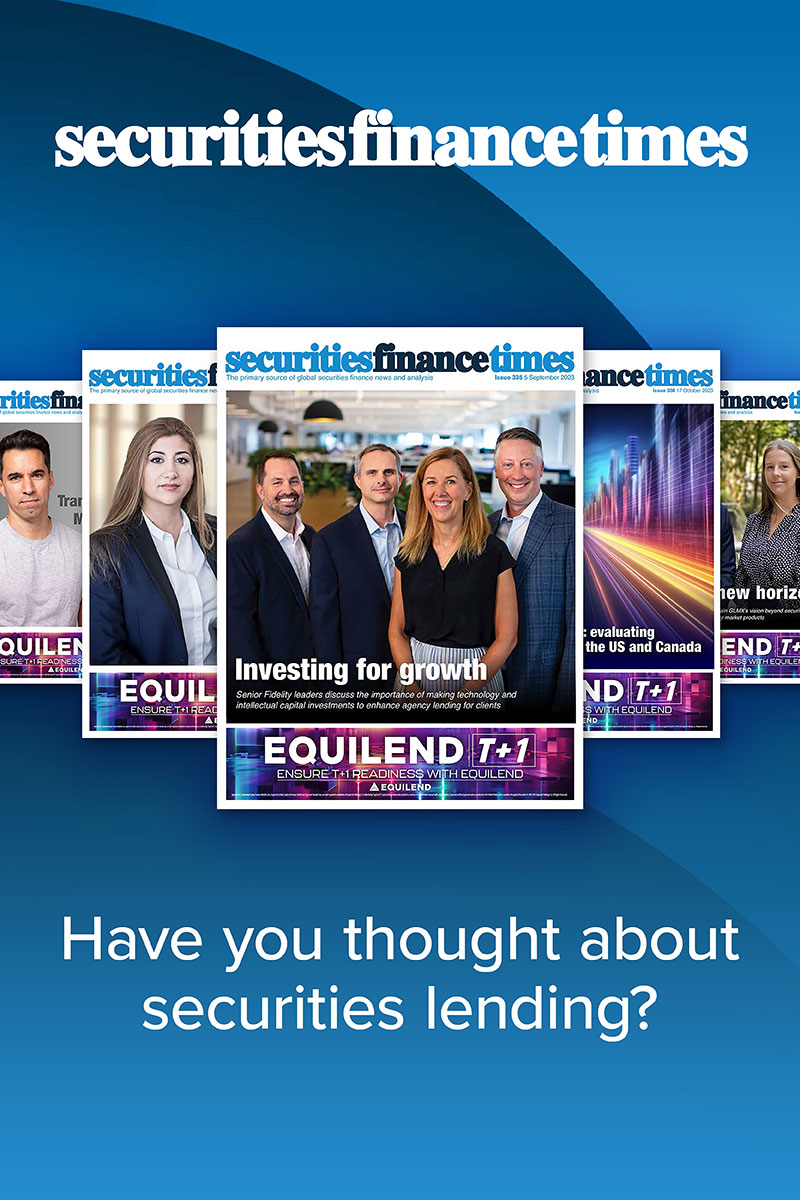Independence, insight, immediacy
29 Oct 2025
As investor expectations, regulation and technology reshape the landscape, independent fund administrators are stepping out of the back office. Zarah Choudhary explores how independence, data and AI are defining the next generation of fund servicing
 Image: kinwun/stock.adobe.com
Image: kinwun/stock.adobe.com
Why nimble fund administrators are winning on data, delivery, and trust
Investors no longer tolerate quarterly snapshots and opaque processes. They want live, auditable answers — inside portals that behave like products, not filing cabinets.
That shift is pulling independent fund administrators from the back office into the heart of strategy.
“Fund managers today expect their administrators to be more than just back office support; they want true partners who deliver transparency, speed, and insight,” says Caroline Baker, executive vice-president, Vistra Fund Solutions.
“Ultimately, greater visibility, faster reporting, and smarter analytics are what will set the next generation of fund administrators apart.”
It is a decisive moment. Complexity and cost are pushing managers to outsource more, while at the same time, administration remains a scale business with long-running margin pressure.
The firms that ‘square the circle’ — data-rich, tech-forward, and human at the point of service — are the ones gaining ground.
Independence as a design principle
Independence is not a branding flourish; it is an operating model. Without group product agendas or legacy tie-ins, independent providers argue they can configure around the client, not force the client around a platform.
“As regulation tightens and investment structures become more intricate, independent fund administrators are being asked to do far more than operations,” says Sarva Srinivasan, global head of strategy and MD Americas, NeoXam.
“Independence allows providers to act without the constraints of group-level agendas or product tie-ins, which can be crucial in fast-changing markets. It gives them the freedom to build solutions around clients’ needs rather than around a fixed technology stack or investment model.”
That autonomy shows up in governance, too. “Independent fund administrators give comfort to clients that they are acting in their best interests,” adds David Fowler, global head of fund services, Ogier Global. Flatter structures help them react quickly to both client demands and regulatory change.
Will Cameron, managing director, JTC, calls it partnership by design: “Independence enables us to provide unbiased, client-focused guidance which creates trust and credibility — essential for long-term relationships.”
The data battleground
Ask any chief operating officer where the pain lives and you will hear the same theme — data availability. Legacy architectures often throttle event-driven, real-time delivery, which is what managers and limited partners (LPs) now expect and what AI-enabled operating models require.
“Clients today expect far greater transparency, both in data and decision-making,” Srinivasan notes.
“Technology must deliver immediacy and accuracy without compromising oversight.”
Without a modern data strategy, administrators will struggle to support upstream/downstream processes and stall their own AI roadmaps. Baker sees differentiation coalescing around turning raw fund data into decisions.
That is already reshaping the front end. ‘Self-service’ is no longer a dashboard marketing line; it is a trust engine.
At IQ-EQ, Justin Partington, global head of fund and asset managers, says client platforms are moving beyond access and visualisation to predictive and prescriptive analytics.
Direct data exchanges with large clients are “life-changing”, accelerating reporting and ingestion into client systems.
Next up is agentic AI that can converse with clients about portfolio data, compliance status and trade history — and take steps toward their objectives, with auditability preserved.
From portals to copilots: AI on the desk
The jump from static portals to conversational, agentic AI is underway. “With the advent of generative AI, client interaction and self-service models are continuing to evolve — at speed,” Partington says. As these tools move into “business as usual”, delivery speeds up and data integrity improves.
Still, the human stays central. “Automation and data-driven processes are transforming efficiency, but clients still want human expertise at the centre of their relationship,” Srinivasan says. Fowler agrees — automate the mundane, elevate the specialist.
Workflow tools and self-service deflect routine queries; named experts handle edge cases, complexity and escalation.
Cameron adds that technology is the enabler that lets teams “work smarter, collaborate more effectively, and drive innovation,” while keeping judgement where it belongs.
Private and hybrid change the brief
Two market shifts are turning operating models inside out. First, the continued pivot into private markets, and second, the rise of hybrid funds blending public and private exposures.
Both demand different skills and componentry from administrators — data models, valuation cadence, liquidity tooling and investor-servicing dynamics differ sharply.
For independents, that is an opening: those able to re-platform as “fund admin as a platform” — modular, API-first, configurable across asset classes — can meet the brief without forcing clients into one-size-fits-all workflows.
Consolidation: Scale’s promise, integration’s test
Across asset and fund services, consolidation is still the favoured answer to margin pressure and rising tech spend.
But post-deal integration is hard and service can wobble during execution.
Srinivasan’s caution is that scale can standardise service.
That creates room for specialists and independents to differentiate on flexibility and depth of engagement — particularly during industry-wide platform migrations and target operating model refreshes.
Investors no longer tolerate quarterly snapshots and opaque processes. They want live, auditable answers — inside portals that behave like products, not filing cabinets.
That shift is pulling independent fund administrators from the back office into the heart of strategy.
“Fund managers today expect their administrators to be more than just back office support; they want true partners who deliver transparency, speed, and insight,” says Caroline Baker, executive vice-president, Vistra Fund Solutions.
“Ultimately, greater visibility, faster reporting, and smarter analytics are what will set the next generation of fund administrators apart.”
It is a decisive moment. Complexity and cost are pushing managers to outsource more, while at the same time, administration remains a scale business with long-running margin pressure.
The firms that ‘square the circle’ — data-rich, tech-forward, and human at the point of service — are the ones gaining ground.
Independence as a design principle
Independence is not a branding flourish; it is an operating model. Without group product agendas or legacy tie-ins, independent providers argue they can configure around the client, not force the client around a platform.
“As regulation tightens and investment structures become more intricate, independent fund administrators are being asked to do far more than operations,” says Sarva Srinivasan, global head of strategy and MD Americas, NeoXam.
“Independence allows providers to act without the constraints of group-level agendas or product tie-ins, which can be crucial in fast-changing markets. It gives them the freedom to build solutions around clients’ needs rather than around a fixed technology stack or investment model.”
That autonomy shows up in governance, too. “Independent fund administrators give comfort to clients that they are acting in their best interests,” adds David Fowler, global head of fund services, Ogier Global. Flatter structures help them react quickly to both client demands and regulatory change.
Will Cameron, managing director, JTC, calls it partnership by design: “Independence enables us to provide unbiased, client-focused guidance which creates trust and credibility — essential for long-term relationships.”
The data battleground
Ask any chief operating officer where the pain lives and you will hear the same theme — data availability. Legacy architectures often throttle event-driven, real-time delivery, which is what managers and limited partners (LPs) now expect and what AI-enabled operating models require.
“Clients today expect far greater transparency, both in data and decision-making,” Srinivasan notes.
“Technology must deliver immediacy and accuracy without compromising oversight.”
Without a modern data strategy, administrators will struggle to support upstream/downstream processes and stall their own AI roadmaps. Baker sees differentiation coalescing around turning raw fund data into decisions.
That is already reshaping the front end. ‘Self-service’ is no longer a dashboard marketing line; it is a trust engine.
At IQ-EQ, Justin Partington, global head of fund and asset managers, says client platforms are moving beyond access and visualisation to predictive and prescriptive analytics.
Direct data exchanges with large clients are “life-changing”, accelerating reporting and ingestion into client systems.
Next up is agentic AI that can converse with clients about portfolio data, compliance status and trade history — and take steps toward their objectives, with auditability preserved.
From portals to copilots: AI on the desk
The jump from static portals to conversational, agentic AI is underway. “With the advent of generative AI, client interaction and self-service models are continuing to evolve — at speed,” Partington says. As these tools move into “business as usual”, delivery speeds up and data integrity improves.
Still, the human stays central. “Automation and data-driven processes are transforming efficiency, but clients still want human expertise at the centre of their relationship,” Srinivasan says. Fowler agrees — automate the mundane, elevate the specialist.
Workflow tools and self-service deflect routine queries; named experts handle edge cases, complexity and escalation.
Cameron adds that technology is the enabler that lets teams “work smarter, collaborate more effectively, and drive innovation,” while keeping judgement where it belongs.
Private and hybrid change the brief
Two market shifts are turning operating models inside out. First, the continued pivot into private markets, and second, the rise of hybrid funds blending public and private exposures.
Both demand different skills and componentry from administrators — data models, valuation cadence, liquidity tooling and investor-servicing dynamics differ sharply.
For independents, that is an opening: those able to re-platform as “fund admin as a platform” — modular, API-first, configurable across asset classes — can meet the brief without forcing clients into one-size-fits-all workflows.
Consolidation: Scale’s promise, integration’s test
Across asset and fund services, consolidation is still the favoured answer to margin pressure and rising tech spend.
But post-deal integration is hard and service can wobble during execution.
Srinivasan’s caution is that scale can standardise service.
That creates room for specialists and independents to differentiate on flexibility and depth of engagement — particularly during industry-wide platform migrations and target operating model refreshes.
NO FEE, NO RISK
100% ON RETURNS If you invest in only one asset servicing news source this year, make sure it is your free subscription to Asset Servicing Times
100% ON RETURNS If you invest in only one asset servicing news source this year, make sure it is your free subscription to Asset Servicing Times



